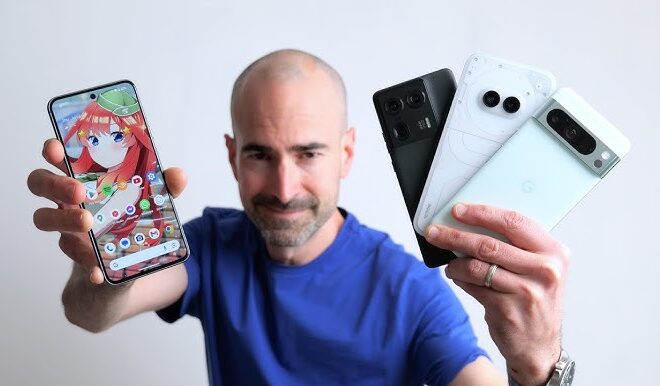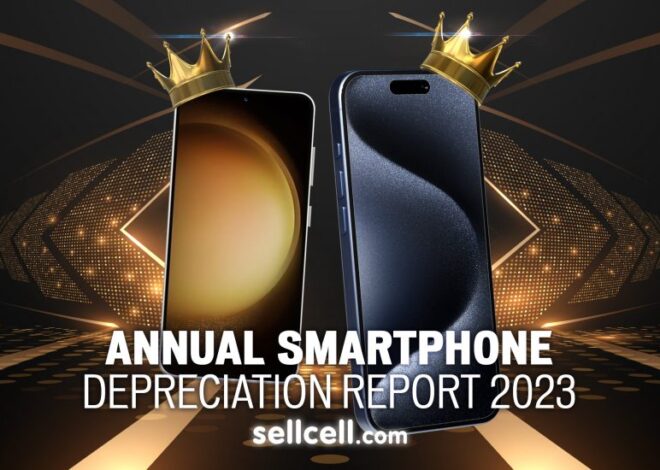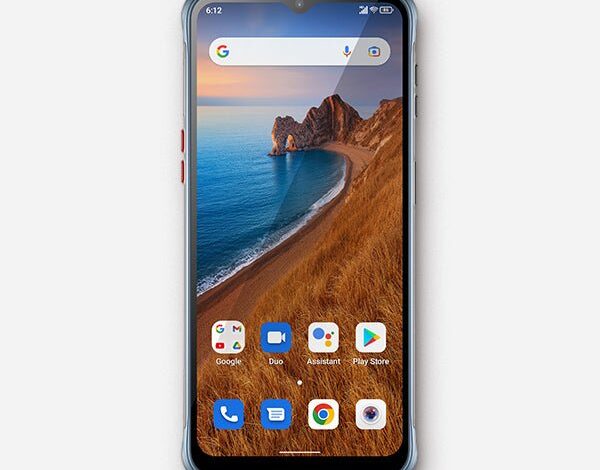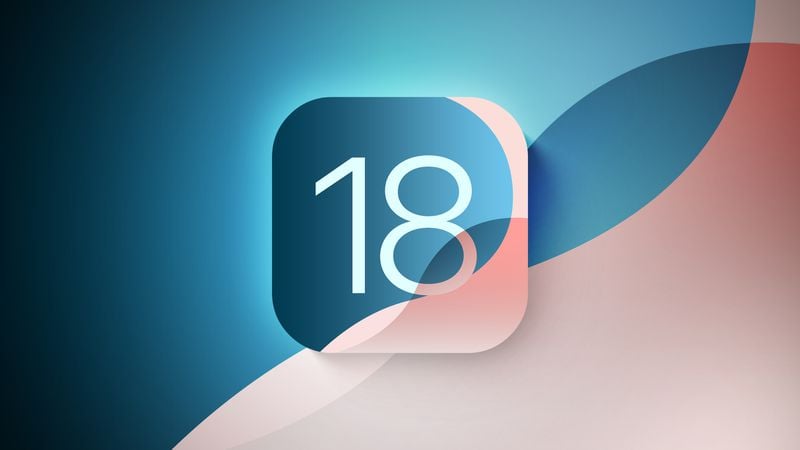
The Innovation Echo: Why Apple’s Latest iOS Features Feel Familiar to Android Users
In the fast-paced world of mobile technology, the annual developer conferences from Google and Apple are landmark events, setting the stage for the next year of software innovation. Each keynote is a carefully orchestrated spectacle, promising revolutionary features that will redefine our relationship with our devices. Yet, for seasoned users of Android phones, there’s often a distinct sense of déjà vu during Apple’s presentations. The announcement of iOS 18 was no exception, sparking a familiar conversation across the tech community: many of its “new” and “magical” features bear a striking resemblance to functionalities that have been staples in the Android ecosystem, particularly on Google’s Pixel devices, for years.
This recurring phenomenon is more than just a simple case of “who did it first.” It reveals a fundamental difference in the philosophies that drive the world’s two dominant mobile operating systems. While one platform champions rapid, open innovation and user-centric customization, the other prioritizes a polished, gradual integration within a tightly controlled ecosystem. This article delves into this dynamic, exploring the specific features in question, the underlying strategies of Google and Apple, and what it all means for consumers navigating the ever-evolving landscape of smartphones and Android gadgets. It’s a look beyond the marketing hype to understand the deeper currents of technological development that shape the powerful computers we carry in our pockets.
The Familiar Fanfare: A Pattern of Delayed Adoption
The notion that iOS often adopts features long after their debut on Android is a well-documented trend. This isn’t a slight against Apple’s engineering prowess, but rather an observation of a deliberate and consistent product strategy. By examining both historical precedents and the latest announcements, we can see a clear pattern emerge, highlighting a calculated approach to feature implementation that contrasts sharply with Google’s methodology.
More Than Just a Coincidence: A Historical Perspective
Long before the latest wave of AI-powered enhancements, the foundation of this trend was laid. Consider some of the most fundamental aspects of the modern smartphone experience:
- Widgets on the Home Screen: For over a decade, Android users have enjoyed the ability to place dynamic, information-rich widgets directly on their home screens. This feature was a core part of Android’s identity, offering at-a-glance information and quick actions. Apple introduced a similar capability with iOS 14 in 2020, presenting it as a major redesign, years after it had become standard on all Android phones.
- Customizable Home Screens: The freedom to arrange app icons anywhere on the grid, leaving empty spaces for aesthetic or practical reasons, has been an Android feature since its inception. iOS maintained a rigid, top-to-bottom, left-to-right grid until iOS 18 finally granted users this basic level of organizational freedom.
- Third-Party Keyboards: Android championed keyboard variety and customization from its early days, allowing users to install powerful alternatives like SwiftKey and Gboard. Apple opened its platform to third-party keyboards much later, with iOS 8 in 2014.
- Rich Notifications: The ability to reply to messages, archive emails, or perform other actions directly from a notification shade has been a cornerstone of Android’s user experience, making it more efficient. iOS has gradually incorporated similar interactive capabilities over several updates, slowly catching up to the functionality Android users have long taken for granted.
The iOS 18 Case Study: AI and Customization
The latest announcements from Apple’s WWDC 2024 brought this pattern into sharp focus, particularly in the realms of customization and artificial intelligence. Several flagship features of iOS 18 have direct, and in many cases more mature, counterparts on Android, especially on Google’s Pixel line.

- AI-Powered Photo Editing: Apple introduced a “Clean Up” tool, which functions almost identically to Google’s Magic Eraser, a feature that debuted on the Pixel 6 in 2021. Magic Eraser allows users to remove unwanted objects or people from photos with a simple tap, a piece of computational photography magic that has been a key selling point for Pixel phones.
- On-Device AI and Summarization: “Apple Intelligence” promises on-device processing for tasks like summarizing text and prioritizing notifications. This is the very core of the Pixel philosophy. Features like Call Screen (which uses on-device AI to answer potential spam calls), Recorder with live transcription and summarization, and AI-driven battery management have been central to the Pixel experience for multiple generations.
- Advanced Home Screen Customization: iOS 18 now allows users to tint app icons with a specific color to match their wallpaper and place them freely on the grid. This level of customization is elementary for Android users, who have had access to powerful third-party launchers like Nova Launcher for years, offering granular control over every aspect of the home screen, from icon packs to grid layouts.
- RCS Messaging: After years of public pressure, Apple is finally adopting the Rich Communication Services (RCS) standard, which will improve the messaging experience between iPhones and Android devices by enabling high-resolution media sharing, read receipts, and typing indicators. Google has been the primary champion of RCS for years, integrating it into its Messages app and urging Apple to join for a more unified, modern messaging landscape.
A Tale of Two Philosophies: Open Innovation vs. Polished Integration
The reason for this consistent gap between feature debut and widespread adoption isn’t accidental; it’s the result of two fundamentally different corporate and development philosophies. Understanding these approaches is key to appreciating why each platform evolves the way it does and for whom each is best suited.
Android’s Open Playground: Fail Fast, Innovate Faster
Android’s strength—and sometimes its weakness—is its open nature. Built on an open-source foundation, it allows a vast ecosystem of manufacturers to build a diverse array of Android phones and Android gadgets. This fosters intense competition and rapid innovation. Google often uses its own Pixel line as a testbed for bleeding-edge features, rolling them out through “Pixel Feature Drops” multiple times a year. This iterative approach means features are introduced to the public early, sometimes before they are perfectly polished.
This model has several consequences:
- Rapid Prototyping: Features like Circle to Search, Magic Eraser, and Night Sight were introduced on Pixel phones first, allowing Google to gather real-world data and refine the technology before it potentially rolls out to the wider Android ecosystem.
- User Choice and Customization: The open model empowers users. If you don’t like the default launcher, you can install a new one. If you want a different messaging app, you have dozens to choose from. This freedom is a core tenet of the Android experience.
- Fragmentation Challenge: The downside is potential fragmentation. A feature available on a new Google Pixel or Samsung Galaxy might not be available on a budget Android phone from another brand, or it might be implemented differently. This can lead to an inconsistent user experience across devices.
Apple’s Walled Garden: The Art of Vertical Integration
Apple operates a “walled garden” ecosystem. It designs the hardware (iPhone), the software (iOS), and the core services (iCloud, iMessage). This vertical integration gives Apple unparalleled control over the user experience. Features are typically not released until they are deemed “perfect” and can be seamlessly integrated across Apple’s entire product line.
This strategy leads to:
- Consistency and Polish: When Apple releases a feature like widgets, it is deeply integrated into the OS with a consistent design language and smooth animations. The experience is predictable and reliable across all supported iPhones.
- Delayed but Mainstream Adoption: Apple may not be first, but its entry into a feature category often validates it for the mainstream market. Their marketing prowess can make a years-old concept feel brand new and revolutionary to millions of users, driving mass adoption.
- Ecosystem Lock-In: The seamless integration between the iPhone, Mac, Apple Watch, and other devices is a powerful retention tool. By making its implementation of features work so well within its own ecosystem, Apple makes it harder for users to switch to a competitor.
Beyond Bragging Rights: What This Means for the Mobile Landscape
The dynamic between Android’s pioneering spirit and Apple’s refining approach has significant implications for consumers, developers, and the tech industry as a whole. It shapes user perception, influences purchasing decisions, and ultimately pushes the boundaries of what mobile devices can do.
The Validation Factor and Market Perception
When Apple adopts a technology, it often signals to the broader market that the feature has matured and is ready for prime time. The upcoming adoption of RCS is a perfect example. While a niche topic among tech enthusiasts for years, Apple’s support will instantly make it a standard for secure, modern messaging, benefiting all users. However, this also feeds a powerful marketing narrative. Apple excels at storytelling, framing its implementation as the “right” way to do something. This can overshadow the years of innovation from the Android side, influencing the Android news cycle and shaping public perception to favor Apple as the primary innovator, even when evidence suggests otherwise.
The Deepening Ecosystem Divide
As both platforms incorporate more AI and device-to-device synergy, the choice of a smartphone becomes less about a single device and more about committing to an entire ecosystem. Google is building its ecosystem around the power of its AI and cloud services, with features that sync seamlessly between a Pixel phone, a Chromebook, and Google Nest devices. Apple, meanwhile, continues to strengthen the bonds between the iPhone, Mac, and Apple Watch through its tight hardware and software integration. While Apple’s implementation of a feature might be late, its deep integration—like Universal Control between a Mac and iPad—creates a powerful, cohesive experience that is difficult for Android’s more fragmented ecosystem to replicate with the same level of polish.
Navigating the Choice: Is ‘First’ or ‘Polished’ Better for You?
Ultimately, the “better” platform is entirely subjective and depends on individual priorities. This ongoing cycle of innovation and adoption provides clear guideposts for consumers trying to decide where to invest their money and digital lives.
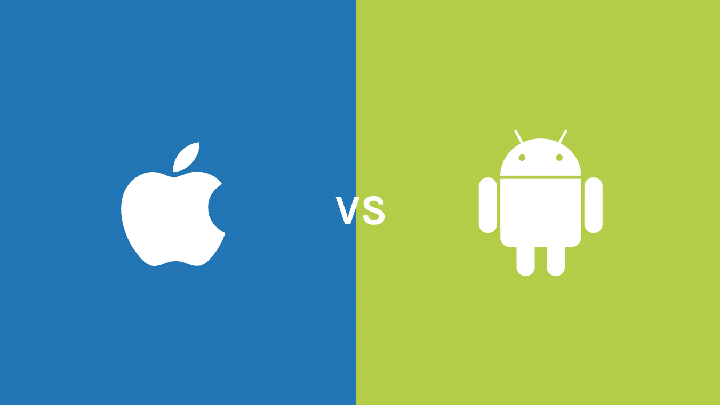
The Case for Android: Customization and Cutting-Edge Tech
You should lean towards the world of Android phones if you:
- Value Customization: You want to control every aspect of your device, from the home screen layout to default applications and system-level settings.
- Crave the Latest Features: You enjoy being on the cutting edge and experimenting with new technologies, especially in AI and computational photography, as soon as they are available.
- Prioritize Hardware Variety: You want a choice of hardware at every price point, from flagship foldable phones to affordable mid-rangers from dozens of different manufacturers.
The Case for iOS: Simplicity and Seamless Integration
You might be better served by an iPhone if you:
- Prioritize Ease of Use: You want a device that “just works” out of the box with a minimal learning curve and a highly consistent user interface.
- Are Invested in the Apple Ecosystem: You already own a Mac, iPad, or Apple Watch and want to take full advantage of the seamless integration between these devices.
- Value Long-Term Software Support: Apple has an excellent track record of providing software updates for its devices for many years, often longer than most Android manufacturers.
Conclusion: A Symbiotic Rivalry
The recurring theme of iOS adopting features pioneered by Android is not a sign of failure on either side, but rather a reflection of their core philosophies. Google’s Android, particularly through its Pixel line, serves as the industry’s incubator, rapidly pushing new ideas and AI-driven functionalities into the real world. Apple, in turn, acts as the industry’s refiner, observing which features gain traction and meticulously integrating them into its polished, user-friendly ecosystem. This dynamic, while a source of endless debate among tech fans, creates a healthy, competitive tension. Apple’s polish pushes Google and its partners to improve user experience and consistency, while Android’s relentless innovation ensures Apple can’t afford to remain stagnant. In the end, the true beneficiary of this innovation echo is the consumer, who is left with two incredibly powerful, mature, and constantly improving platforms to choose from.

